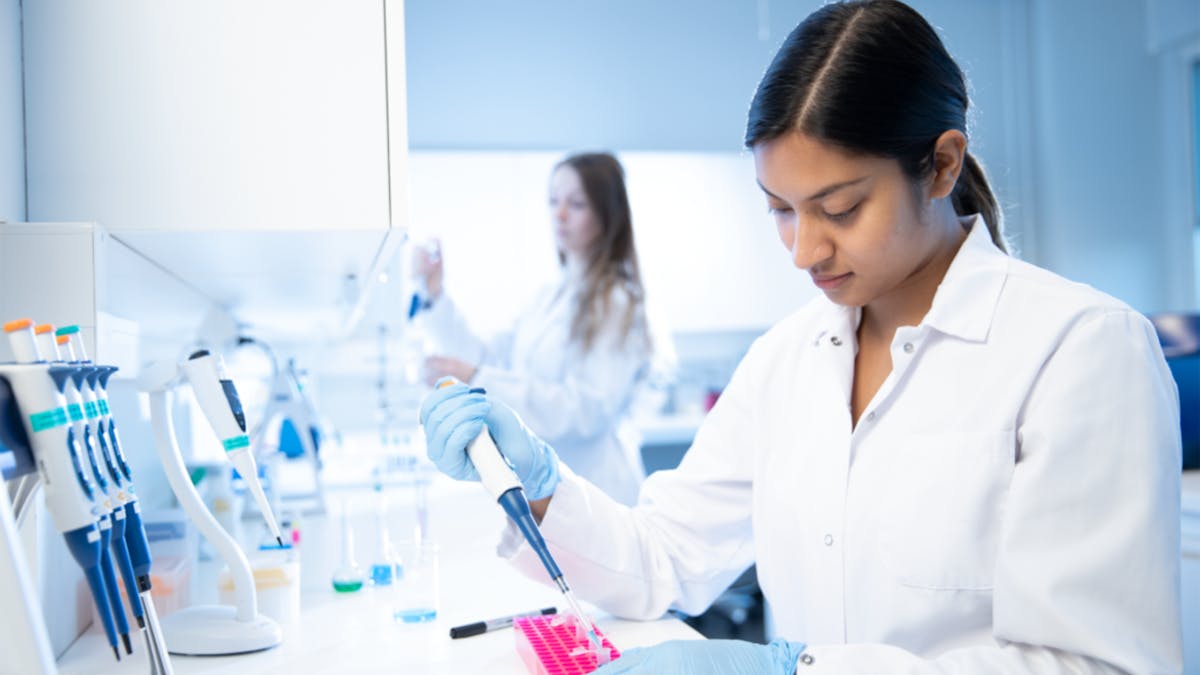The story behind ArcDia is a Finnish interdisciplinary innovation based on the use of biotechnology and laser optics in medicine. The founders, Janne Koskinen, PhD, and Aleksi Soini, PhD, saw a problem: testing for respiratory infections was rarely done at the health centre level but focused mainly on the hospital settings. In addition, treatment of respiratory diseases was not based on pathogen identification but was indiscriminate, leading to the overuse of antibiotics.
Koskinen's PhD in biotechnology focused on applications of TPX technology developed by ArcDia to diagnose infectious diseases. As a result of this research, Koskinen became familiar with the theories and practices of clinical infectious disease diagnostics, and the idea for an automated testing system, the mariPOC® product innovation, was born.
Koskinen and Soini wrote the first business plan for the mariPOC® business in 2007. This business idea and know-how, as well as the detection technology (know-how and intellectual property rights) of Arctic Diagnostics Ltd, were transferred as a contribution to a new company, ArcDia International Oy Ltd. The company launched the mariPOC® system in Finland in 2010, when the respiratory infection testing market was at an early stage of development.
The new technology enables rapid and automated testing
ArcDia founders Soini and Koskinen foresee that respiratory infection treatment practices will change as soon as technology that enables rapid and automated decentralised testing is available on the market. This market vision has been realised, and large companies are now acquiring manufacturing capacity and commercial rights in the respiratory infection testing market.
The CE-marked mariPOC® has become the leading test system in the Finnish market. Currently, ArcDia has 47 customers in Finland, including medical centres, hospitals and clinical laboratories. For instance, the test method has been popular in diagnosing childhood infections. The vast majority of mariPOC® equipment is in medical centres in the private sector, but already 1/3 of the revenue is generated by workplace testing.
Faster diagnostics enable correct treatment without delay
mariPOC® promises clear benefits in terms of speed, reliability, ease of use and multi-analytical. Up to 11 pathogens can be detected in the same sample, including the pandemic SARS-CoV-2 coronavirus and the seasonal coronavirus OC43. The method also identifies such as influenza A and B viruses, RS-virus, metapneumovirus, adenovirus and parainfluenza viruses, all of which cause similar disease patterns.
Low-threshold testing improves global infection control
The SARS-CoV-2 pandemic affected people's behaviour, making it unacceptable to go out in public places and meet others when symptomatic. Therefore, ArcDia foresees that after the coronavirus pandemic, the overall volume of respiratory infection testing will remain significantly higher than the pre-pandemic baseline.
According to the company, the healthcare community now understands that low-threshold testing is the cornerstone of infection control. However, traditional technology does not allow for rapid and timely testing of acute infections in practice. Therefore, the company expects that single virus/bacteria testing in a central laboratory will be replaced by multi-analyte low-threshold rapid testing (multi-analyte = multiple viruses/bacteria measured simultaneously).
1998–2003 Fundamental inventions of the TPX technology were made in the Laboratory of Biophysics (University of Turku, Finland) led by professor Erkki Soini.
2000 The TPX detection technique was published in Nature Biotechnology.
2005–2009 The applicability of TPX detection technique for rapid in vitro testing of infectious diseases was demonstrated in academic projects at Turku University.
2008 ArcDia International Oy Ltd. was founded. mariPOC® product development project began.
2011 mariPOC® product was IVD CE marked and was introduced to the market.
2013 ArcDia received the ISO 13485 certificate.
2014 ArcDia Receives Frost & Sullivan Award for Point-of-Care Product Leadership.
2015–2016 ArcDia releases new products: mariPOC®+ software mode, mariPOC® Gastro test panel and the world's first bocavirus antigen test
2017 ArcDia launches a new product: mariPOC®Quick StrepA test
2018 New product: mariPOC®Quick Flu/RSV test
2020 New product: mariPOC® SARS-CoV-2 test
2021 Updated mariPOC® SARS-CoV-2 test





















